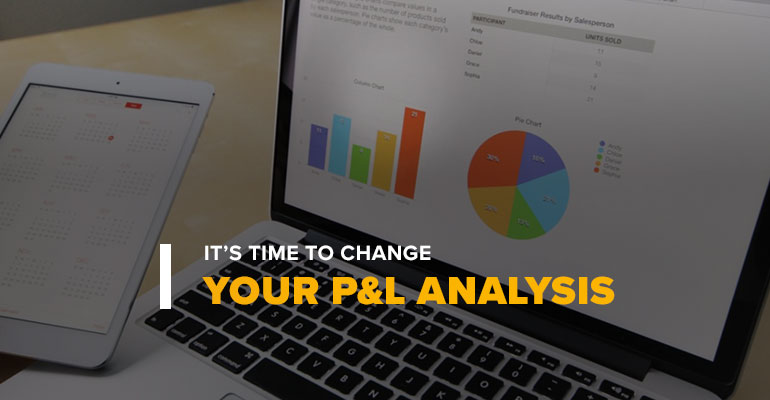May 4, 2019 - Mark Heymann, CEO and Co-Founder, UniFocus - Published in Money, Inc. - Performance management is a term often used in discussions around improving an organization’s results. It includes activities that ensure goals are being met consistently, effectively and efficiently. It can focus on the performance of an organization, a department, employee, or even the processes to build a product or service, as well as many other areas. One of the key performance management tools businesses traditionally use is the profit and loss review, which compares actual results to budget projections. But the analytical approach that this tool presents is now well out of date.
Why?
In many cases, if not all, the largest percentage of a profit and loss review uses a fixed budget approach. This approach can be effective in a manufacturing operation, where production in relation to top-line revenues is more controllable but, for service-related businesses, it falls short.
The goal of a manufacturer is to maximize throughput of a factory operation; in essence, making sure that if a machine or a production line can produce 1,000 widgets an hour, the performance of that line meets this “standard.” There are no outside forces; staffing levels for the machine or line are established based on work stations and other internal requirements to meet the 1,000 widgets-per-hour rate, and those widgets are then placed in inventory. With inventory as a buffer to help optimize production, a fixed budget approach works pretty well. And its dominance was understandable when the U.S. economy was heavily slanted towards manufacturing.
But that has changed
Three out of four jobs today are coming from service industries, where measurable external forces impact day-to-day production. Look at a restaurant, hotel, casino, retail or other dynamic operating environment—the budget projections that lead to cost expectations are highly variable from a production standpoint. And with this variability of production volumes comes a demand for better performance management techniques.
The alternative that I believe service-related businesses should fully embrace is variable, or flex, budgeting and performance analysis. This approach is not new; in fact, it has existed far longer that I have been in business. But for organizations that have limited control over how much they produce on a particular day (consumer demand varies, after all) a variable/flex budget approach enables a more thoughtful application of cost parameters when assessing performance.
Let’s compare two examples: a car production plant and a restaurant
For the car producer, once a design has been developed, a cost is calculated based on all the aspects of the car, from chassis to electronics to seats, and so forth. The nice thing about this cost standard is that once the determination is made to build Model A, the cost of producing that model is clearly known and can be measured easily during the P&L review. And the production is to inventory, without the variability of day-to-day changes in requirements.
The restaurant, by contrast, involves setting parameters that define the cost of serving a customer, from labor to food to other related operating costs. Some of these costs are, in essence, fixed and some vary significantly based on the volume of guests served. The challenge arises in getting an accurate forecast of that volume. Customer demand can vary widely from period to period and rarely is the budgeted top line accurate. And not only are customer counts difficult to predict months in advance, but the revenue per customer also varies.
Despite this, in my experience most organizations still ascribe to the fixed budget review approach, comparing actual costs to budgeted costs even as it produces inaccurate results. And they’re losing out.
Replacing fixed budget with a flex/variable budget approach would enable service businesses to factor the following into their P&L review: original budget, updated plan (if applicable), actual and flex. The flex is developed by taking the actual volumes serviced and applying the cost model that was used to develop the original budget. If, for example, the labor cost per customer is $2.25 in the original budget and the number of customers budgeted was 5,000, the budget labor would be $11,250. Assume the actual labor is $13,000. A fixed budget approach would show the business went over budget by $1,750, or 16%–a poor result. But a flex/variable perspective would factor in the actual volume of customers, in this case 5,800. At that volume, the cost of labor should be $13,050. Now the cost is under .5% variance—a much healthier result, and one that won’t trigger an unnecessary performance discussion.
If organizations in the service space would embrace flex/variable budgeting and P&L analysis, performance management would be far more accurate and the issues that truly need addressing would be easier to discern.






